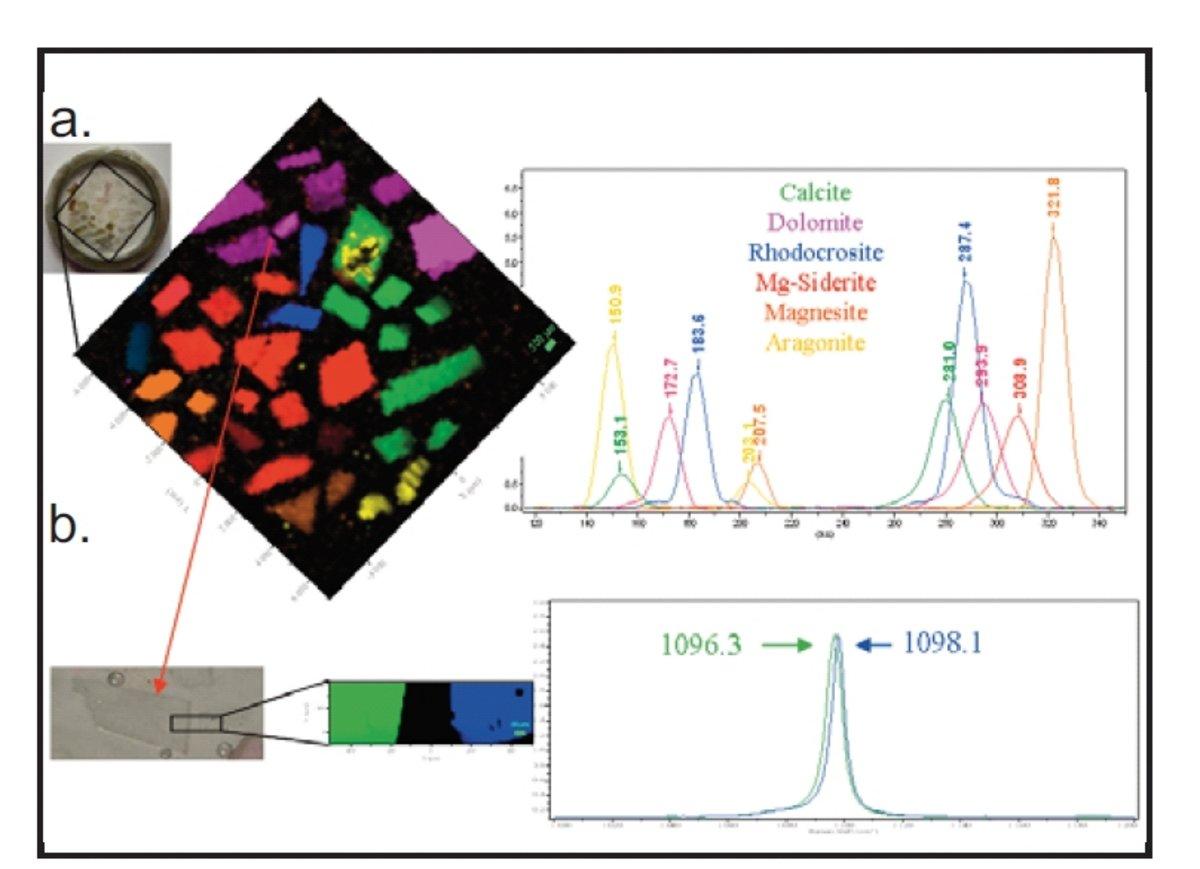

Natural rocks composing the Earth are complex. They consist of an aggregate of one or more minerals. Each mineral can be defined by its chemical composition and its crystalline structure and sometimes can also contain fluid inclusions. Geologists need a powerful characterization technique to get detailed information on the rock formation history. Raman spectroscopy is extremely information-rich (chemical identification, characterization of molecular structures, effects of bonding, environment and stress on a sample). With its non-destructive properties and high spatial resolution (< 1 μm), it is thus a tool of choice for geological studies.
Natural rocks composing the Earth are complex. They consist of an aggregate of one or more minerals. Each mineral can be defined by its chemical composition and its crystalline structure and sometimes can also contain fluid inclusions. Geologists need a powerful characterization technique to get detailed information on the rock formation history. Raman spectroscopy is extremely information-rich (chemical identification, characterization of molecular structures, effects of bonding, environment and stress on a sample). With its non-destructive properties and high spatial resolution (< 1 μm), it is thus a tool of choice for geological studies.
Confocal Raman Microscope
HORIBA제품의 자세한 정보를 원하시면, 아래의 양식에 내용을 입력을 부탁드립니다.
